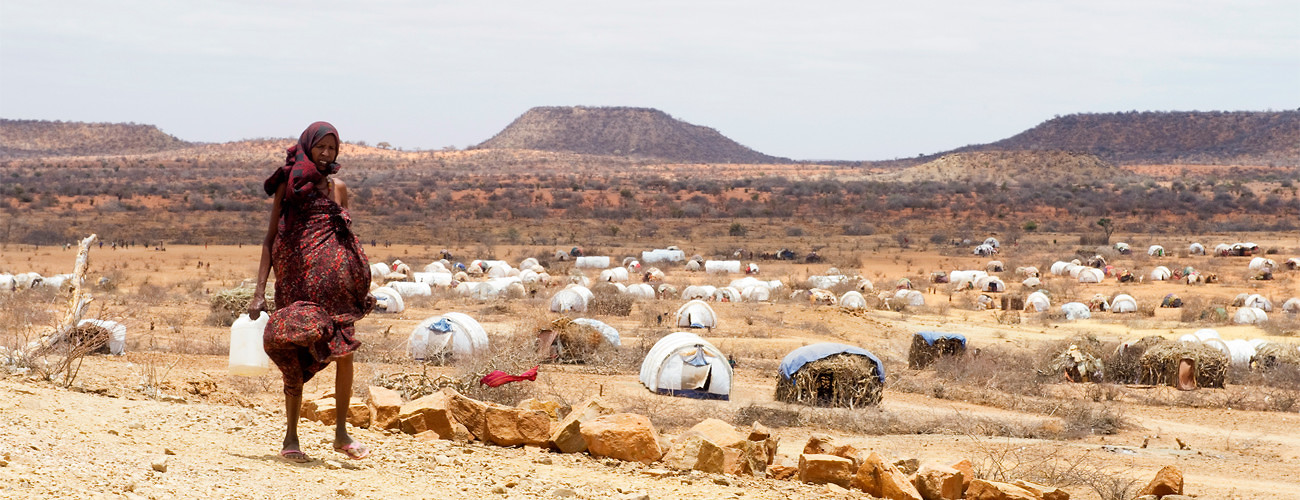A Somali refugee at a camp in Ethiopia, August 2011. (UN Photo/Eskinder Debebe)
By 2050, 25 million to 1 billion people are expected to be migrating due to environmental factors. Though examining linkages between environmental conditions and migration have been on the international agenda at least since 1992, only in recent years have they become better understood. It is clear today that the environment and environmental change impact migration. They do this by influencing the socioeconomic, political, and cultural drivers that lead people to move.
This issue brief by Chris Perry, following up on a policy forum hosted by the International Peace Institute on October 24, 2011, examines the links between climate change and migration and identifies gaps in the current international policy and legal frameworks for dealing with environmentally displaced persons.
Though progress is being made, such as through the African Union’s Kampala Convention, the current international policy and legal framework for dealing with issues surrounding environmentally displaced persons remains severely underdeveloped. The paper thus recommends four broad strategies for coping with these population movements.
First, more research is needed, which should feed into the deliberations of the UN and regional organizations. Second, migration issues should be better coordinated at the global level; currently, the issue is spread across a number of international bodies. Third, the international community should supply funding and technical assistance to at-risk countries with limited response capacity. Finally, there is a pressing need to move more quickly towards a comprehensive normative and legal framework to deal with environmental migration.








